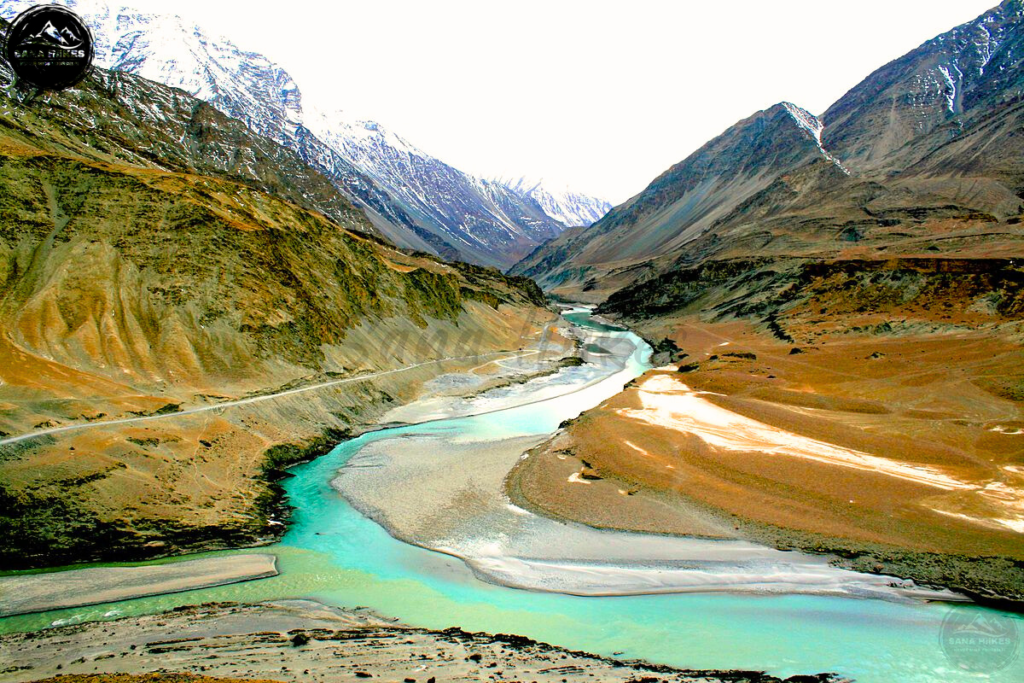
Introduction
Ladakh, often referred to as “The Land of High Passes,” is a breathtaking region in North India that captivates travelers with its dramatic landscapes, rugged mountains, ancient monasteries, and thrilling adventure experiences. It lies at an altitude of 3,500m to 5,600m above sea level, making it one of the highest and most surreal travel destinations in the world. Ladakh is strategically nestled between the Great Himalayas and the Karakoram Range, offering stunning snow-capped peaks, crystal-clear lakes, and vast barren deserts that create a unique and mesmerizing visual contrast.
One of Ladakh’s defining characteristics is its rich Buddhist culture, which is reflected in its numerous monasteries, vibrant festivals, and spiritual traditions. Ancient monasteries like Hemis, Thiksey, and Diskit stand as architectural marvels, offering both peace and a glimpse into Ladakh’s deep-rooted spirituality. For adventure seekers, Ladakh is a paradise. The region is home to some of the world’s highest motorable roads, including Khar dung La and Chang La, making it a dream destination for bikers and road trip enthusiasts. Trekkers can embark on challenging trails like Markha Valley and Stok Kangri, while thrill-seekers can enjoy river rafting on the Zanskar River or try their hand at high-altitude camping under the starry sky.
Ladakh is also famous for its pristine lakes, such as the serene Pangong Lake, which changes colors throughout the day, and Tso Moriri, known for its unspoiled beauty. From its raw, untouched nature to its exhilarating adventure opportunities, Ladakh offers an experience like no other. Whether you’re looking for adventure, spiritual awakening, or a peaceful escape into nature, Ladakh has something for everyone. This travel guide will help you explore this high-altitude wonderland like a pro, ensuring you make the most of your Ladakh experience!
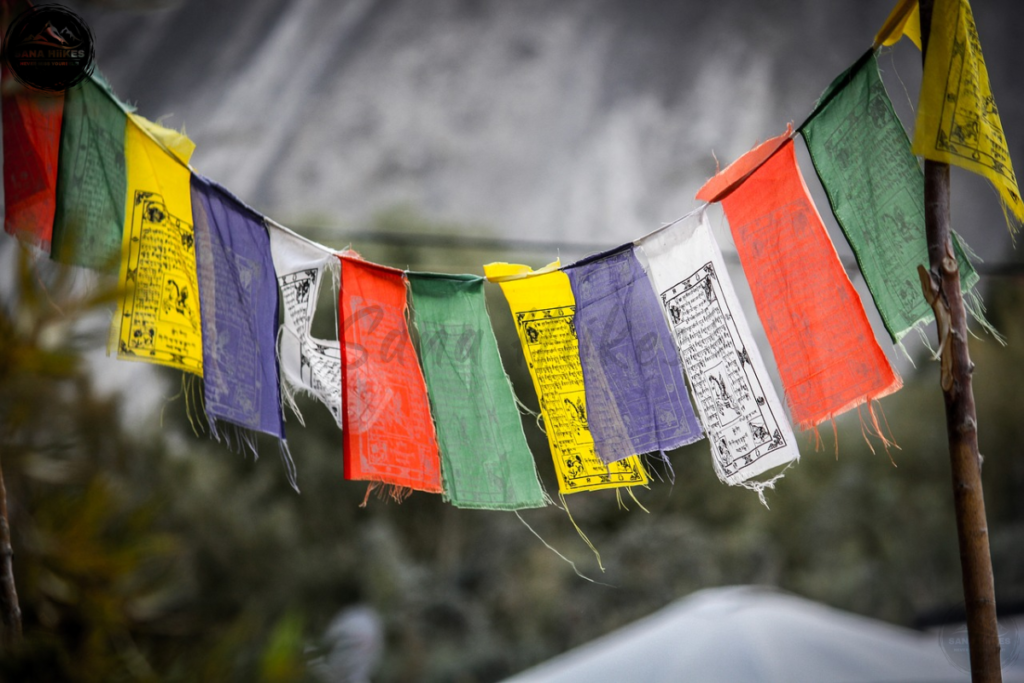
Quick Facts – Ladakh

1. How to Reach Ladakh
Ladakh is accessible by air, road, and limited train connectivity. Depending on your location and travel preferences, you can choose the best route to reach this high-altitude paradise.
By Air—The Fastest and Easiest Way
The quickest way to reach Ladakh is by flight, with Kushok Bakula Rimpochee Airport (IXL) in Leh serving as the main air hub. This airport is well-connected to major cities like Delhi, Mumbai, Chandigarh, Srinagar, and Jammu, with regular flights operated by Air India, IndiGo, Go First, and SpiceJet. The airport is just 4 km from Leh city center, making it convenient for travelers to reach their accommodations quickly. Prepaid taxis, rental cars, and local cabs are readily available outside the airport. However, since Leh is at a high altitude at 3,500m, it is crucial for travelers to rest and acclimatize for at least 24 hours before engaging in any strenuous activity.
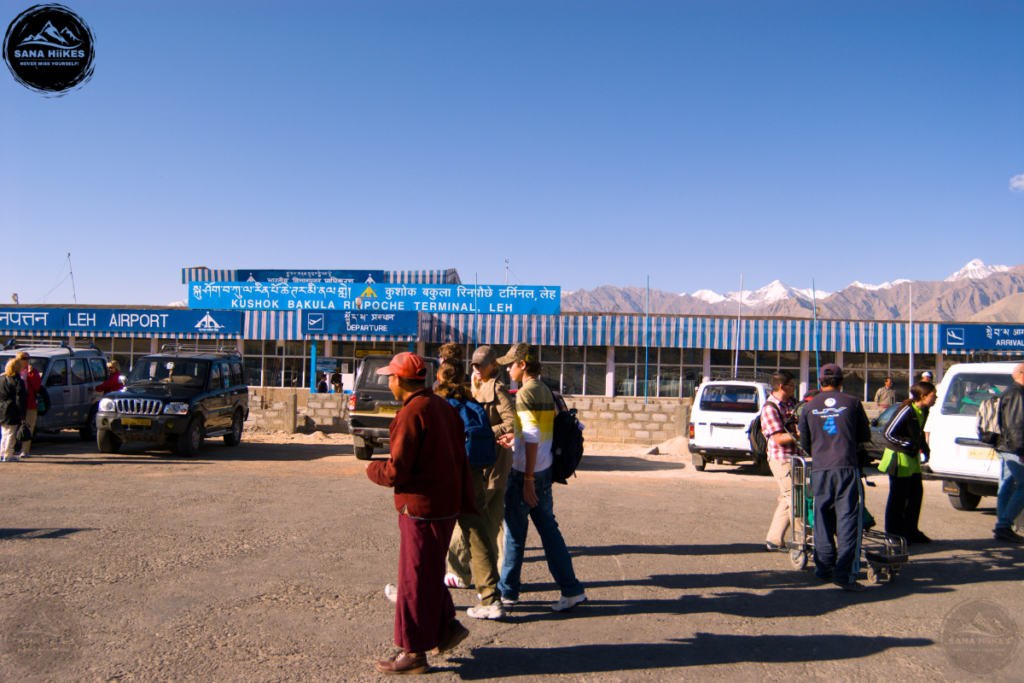
By Train – Limited Rail Connectivity
Due to Ladakh’s rugged and mountainous terrain, there is no direct railway station in the region. However, travelers can take a train to the nearest railway stations and continue their journey by road. Jammu Tawi Railway Station (700 km from Leh) is the most convenient option, well-connected to major cities like Delhi, Mumbai, Kolkata, and Chennai. Another alternative is Pathankot Railway Station (750 km from Leh), though it is slightly farther. From these stations, travelers must hire a taxi or take a bus to reach Ladakh, which can take up to two days of travel through the mountains. Due to the long and challenging journey, most travelers prefer to fly directly to Leh or take a scenic road trip.
By Road – The Most Scenic and Adventurous Route
Traveling to Ladakh by road is an unforgettable experience, offering breathtaking views of the Himalayas, lush valleys, and high-altitude passes. There are two major highways that connect Ladakh to the rest of India:
- Srinagar—Leh Highway (NH1) (434 km)—Open May to October
The Srinagar-Leh Highway is a relatively easier and more accessible route to Ladakh. The journey passes through Sonmarg, Zoji La Pass, Drass, Kargil, and Lamayuru before reaching Leh. Some of the major highlights along the route include Zoji La Pass at 3,528 m, Drass, which is the second coldest inhabited place on Earth, the Kargil War Memorial, and the ancient Lamayuru Monastery. The road conditions are generally better, making it a preferred option for those coming from Delhi, Punjab, and North India. Regular JKSRTC buses, private buses, and shared taxis operate along this route, offering a comfortable way to reach Ladakh.
- Manali-Leh Highway (NH3) (474 km)—Open June to September
For adventure enthusiasts, the Manali-Leh Highway offers a thrilling journey with multiple high-altitude passes. The route passes through Rohtang Pass, Keylong, Jispa, Baralacha La, Sarchu, and Tanglang La, providing some of the most scenic yet challenging road conditions. Highlights of this route include the snow-covered Rohtang Pass (3,978m), Baralacha La (4,890m), and Tanglang La (5,328m), one of the highest motorable passes in the world. The HRTC and HPTDC buses operate from Manali to Leh, and private taxis are also available. However, travelers must be well-prepared for unpredictable weather, high-altitude sickness, and rough terrain, making it an ideal route for seasoned road trippers.
Self-Drive and Bike Trips – The Ultimate Adventure
For thrill-seekers, a self-drive or bike trip to Ladakh is one of the most exhilarating travel experiences. Popular biking routes include Delhi-Manali-Leh (1,100 km) and Delhi-Srinagar-Leh (1,250 km). The best vehicles for such road trips include Royal Enfield motorcycles, 4×4 SUVs, or well-maintained sedans to handle the rough terrain. Since petrol stations are limited along the way, it is advisable to carry extra fuel and plan rest stops carefully. For a smooth experience, travelers should also carry essential supplies, like spare parts, basic medical kits, and energy snacks.
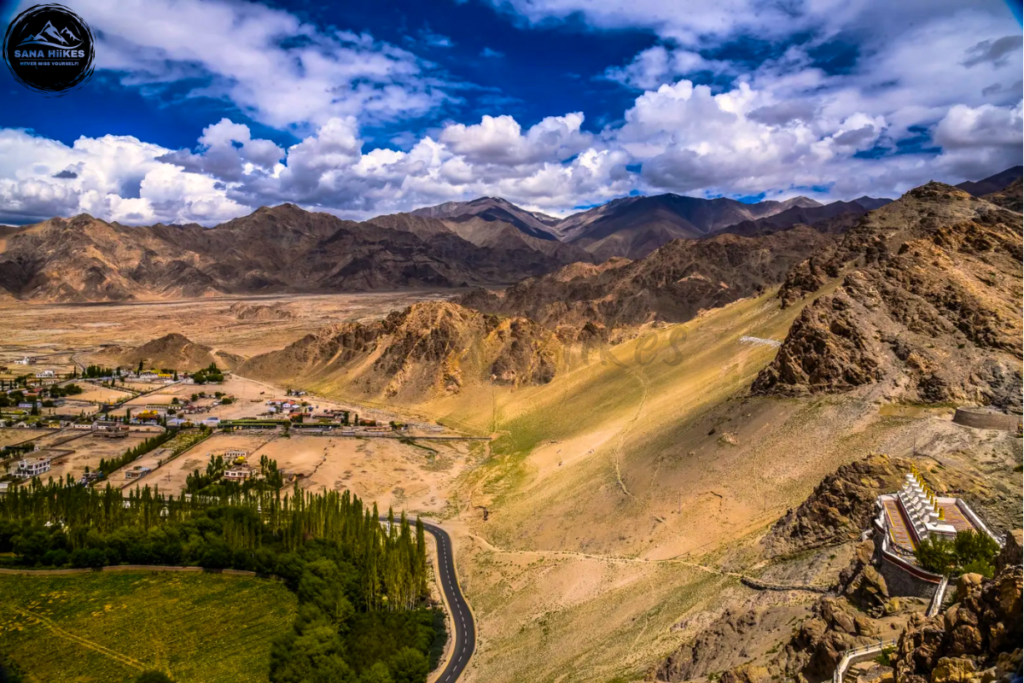
Which Route to Choose?
If you prefer a smoother and more accessible route, the Srinagar-Leh Highway is the best option. For those seeking a challenging and adventurous ride, the Manali-Leh Highway offers a more thrilling experience. However, if you want to save time and avoid long road journeys, flying directly to Leh is the most convenient option. Regardless of the route you choose, traveling to Ladakh is an unforgettable journey, filled with breathtaking landscapes, rich culture, and unparalleled adventure!
2. Best Time to Visit Ladakh
Ladakh is a high-altitude desert with harsh and extreme weather conditions, so choosing the right season is crucial for a comfortable and enjoyable experience. Each season in Ladakh offers something unique, whether it’s thrilling adventure sports, vibrant landscapes, or frozen lakes. Below is a detailed breakdown of what to expect in each season so that you can plan your trip accordingly.
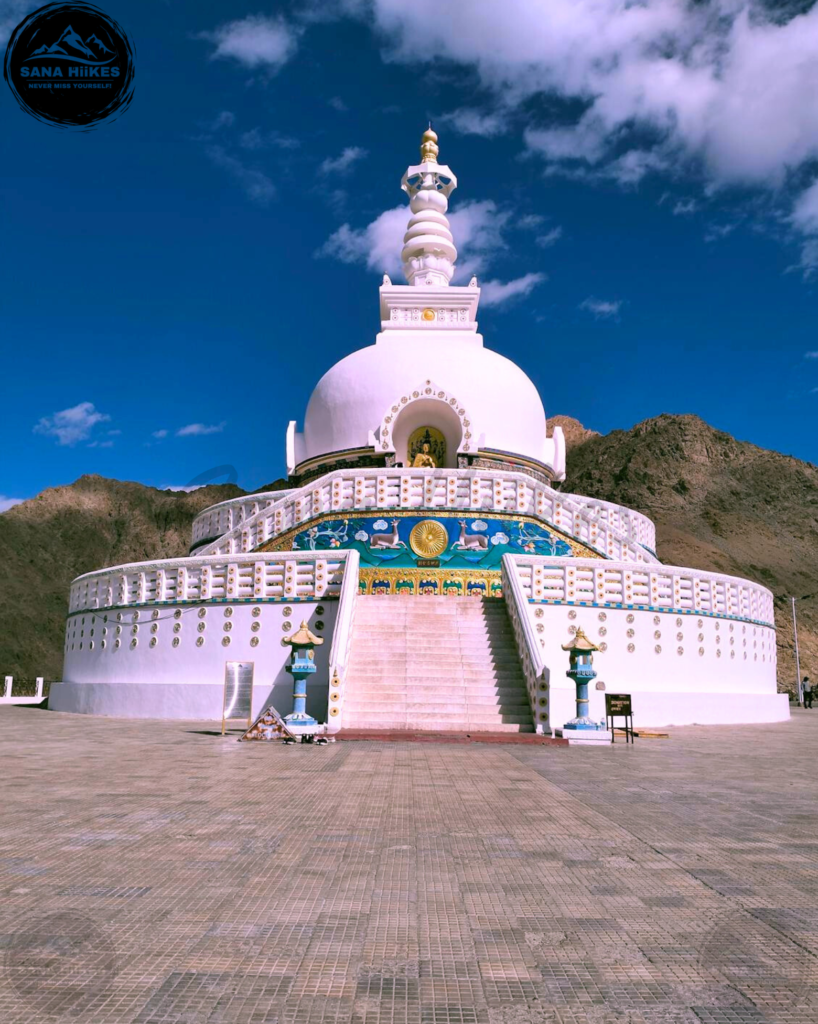
1. Summer (May to September) – Best Time for Tourism
Summer is undoubtedly the best and most popular season to visit Ladakh. During this time, the region comes to life with clear blue skies, comfortable temperatures from 15°C–25°C, and open roads. This is when all major tourist attractions, trekking routes, and mountain passes are accessible.
- Perfect for Road Trips and Biking Adventures: The famous Manali-Leh and Srinagar-Leh highways open up, making it an excellent time for an adventurous road trip. Bikers from all over the country flock to Ladakh for the ultimate motorcycling experience through rugged terrain and high-altitude passes.
- Enjoy Thrilling Water Activities: The Zanskar River offers world-class white-water rafting opportunities, with Grade III and IV rapids, making it an exciting activity for adventure seekers.
- Best for Sightseeing & Trekking: Popular destinations such as Pangong Lake, Nubra Valley, Tso Moriri, Magnetic Hill, and Lamayuru Monastery are easily accessible. Trekking routes like the Markha Valley Trek and the Stok Kangri Trek attract hikers and nature lovers from across the globe.
- Witness the Blooming Beauty of Ladakh: The landscapes are breathtaking, with wildflowers in bloom and green patches dotting the otherwise rugged terrain, offering a perfect contrast to Ladakh’s raw beauty.
Why Visit in Summer?
It’s the best time for outdoor activities, sightseeing, and experiencing Ladakh in its full glory!
2. Monsoon (July to August) – Moderate Rainfall
While Ladakh is known as a cold desert, certain areas, especially near the Manali-Leh Highway and Zojila Pass, receive occasional light rainfall during July and August. However, the majority of Ladakh remains dry, making it a great time for photography and peaceful exploration.
- Green Valleys and Lush Landscapes: The monsoon season transforms Ladakh into a photographer’s paradise, with lush green valleys, misty mountain views, and fresh air enhancing the overall beauty of the region.
- Less Crowded and More Serene: Since this is an offbeat time to visit, the tourist influx is lower, making it the perfect season for those seeking solitude and serenity in Ladakh’s vast landscapes.
- Be Cautious of Landslides: Some routes, especially the Manali-Leh Highway and Zoji La Pass, may experience occasional landslides due to rainfall, so it’s advisable to check weather updates and road conditions before traveling.
Why Visit in Monsoon?
If you love dramatic landscapes and fewer crowds, this is a peaceful and photogenic time to explore Ladakh.
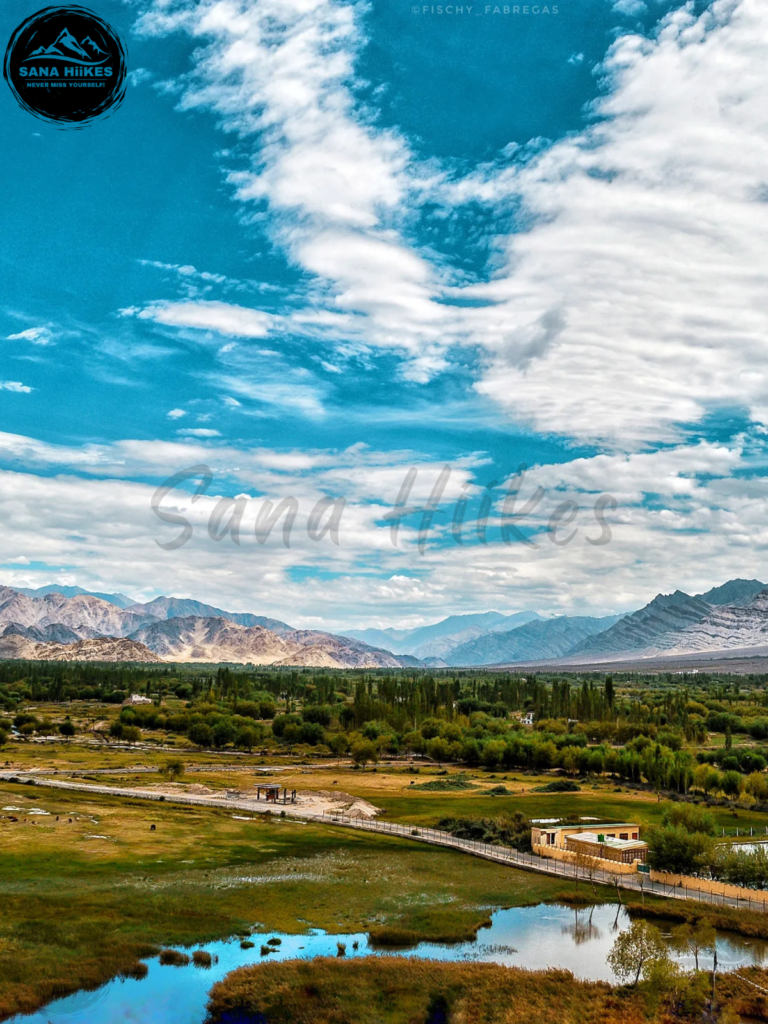
3. Autumn (September to October) – The Golden Season
Autumn in Ladakh is one of the most visually stunning times of the year, as the landscapes take on golden, orange, and red hues, making it an absolute delight for nature lovers and photographers.
- Golden Chinar Trees & Stunning Scenery: The Chinar and Poplar trees turn golden, creating a magical contrast against the deep blue skies and snow-capped peaks.
- Ideal for Cycling & Trekking: The weather remains cool yet pleasant, making it a fantastic time for trekking, mountain biking, and outdoor adventures without the extreme cold of winter.
- Best Time for Photography: Ladakh’s rugged landscapes, monasteries, lakes, and valleys look exceptionally beautiful under the golden autumn light. Fewer tourists also mean less crowded spots for capturing breathtaking shots.
- Great for Late-Season Road Trips: While the Manali-Leh and Srinagar-Leh highways remain open, road conditions are much more stable compared to monsoon, making it one of the best times for bikers and road trippers to explore Ladakh comfortably.
Why Visit in Autumn?
It’s the perfect time for travelers who want stunning views, pleasant weather, and fewer crowds.
4. Winter (November to April) – For Snow Lovers and Extreme Adventure Seekers
Winter in Ladakh is harsh, extreme, and breathtakingly beautiful. With temperatures dropping to -20°C to -40°C, this season is only suitable for hardcore adventurers and snow lovers.
- Experience a Snow-Covered Wonderland: Ladakh turns into a winter paradise, with its lakes, valleys, and peaks completely covered in snow, making it a mesmerizing sight for those who can withstand the freezing temperatures.
- The Chadar Trek – Walk on a Frozen River! One of the most thrilling and challenging treks in the world, the Chadar Trek, takes place during this season. Trekkers walk over the frozen Zanskar River, experiencing the most surreal landscapes of Ladakh.
- Winter Activities and Snow Trekking: Ladakh’s frozen lakes and snowy terrain make it a perfect spot for snow trekking, winter expeditions, and high-altitude survival experiences.
- Experience Monastery Festivals: Ladakh’s monasteries come alive with winter festivals like Dosmoche, Spituk Gustor, and Stok Guru Tsechu, offering visitors a glimpse into ancient Buddhist traditions and masked dance performances.
Travel Challenges in Winter:
- Extremely cold temperatures require heavy winter gear and careful acclimatization.
- Most roads, including the Manali-Leh and Srinagar-Leh highways, remain closed due to heavy snowfall.
- Flights are the only way to reach Ladakh during winter.
Why Visit in Winter?
For those who love snow, adventure, and unique cultural experiences, winter in Ladakh is an unforgettable journey!

3. Things to Do & Must-Visit Places
Ladakh is a dream destination for adventure enthusiasts, nature lovers, and cultural explorers. Whether you’re looking for adrenaline-pumping activities, spiritual retreats, or breathtaking landscapes, Ladakh offers something for everyone. Here’s a breakdown of the top activities and must-visit places in Ladakh.
Adventure Activities in Ladakh
Ladakh is one of India’s top adventure destinations, offering thrilling experiences for adrenaline junkies.
- Bike Trips – Ride Through the World’s Highest Motorable Pass!
Ladakh is a biker’s paradise! One of the most iconic adventures is riding through Khardung La Pass (5,359 m), which was once considered the highest motorable road in the world. The journey takes you through winding mountain roads, high-altitude landscapes, and stunning valleys, making it an unforgettable experience. Other famous biking routes include the Manali-Leh Highway and Chang La Pass.
- River Rafting – Brave the Rapids of the Zanskar River!
For thrill-seekers, white-water rafting on the Zanskar River is a must-try experience. The river offers Grade III and IV rapids, surrounded by towering gorges, scenic landscapes, and deep canyons. The rafting experience here is considered one of the most adventurous in India, perfect for both beginners and experienced rafters.
- Trekking – Explore Ladakh’s Most Scenic Trails!
Ladakh is home to some of the best trekking routes in the Himalayas. Treks range from moderate to highly challenging, offering breathtaking views and cultural experiences.
- Markha Valley Trek: One of the most popular treks, passing through scenic villages, monasteries, and dramatic landscapes.
- Stok Kangri Trek: A challenging trek that takes you to the summit of Stok Kangri (6,153 m), offering panoramic views of the Himalayas.
- Chadar Trek: A unique winter trek where you walk over the frozen Zanskar River, experiencing a surreal, icy landscape.
Why Choose Ladakh for Adventure?
It offers world-class biking, trekking, and river rafting experiences, making it a top destination for thrill-seekers!
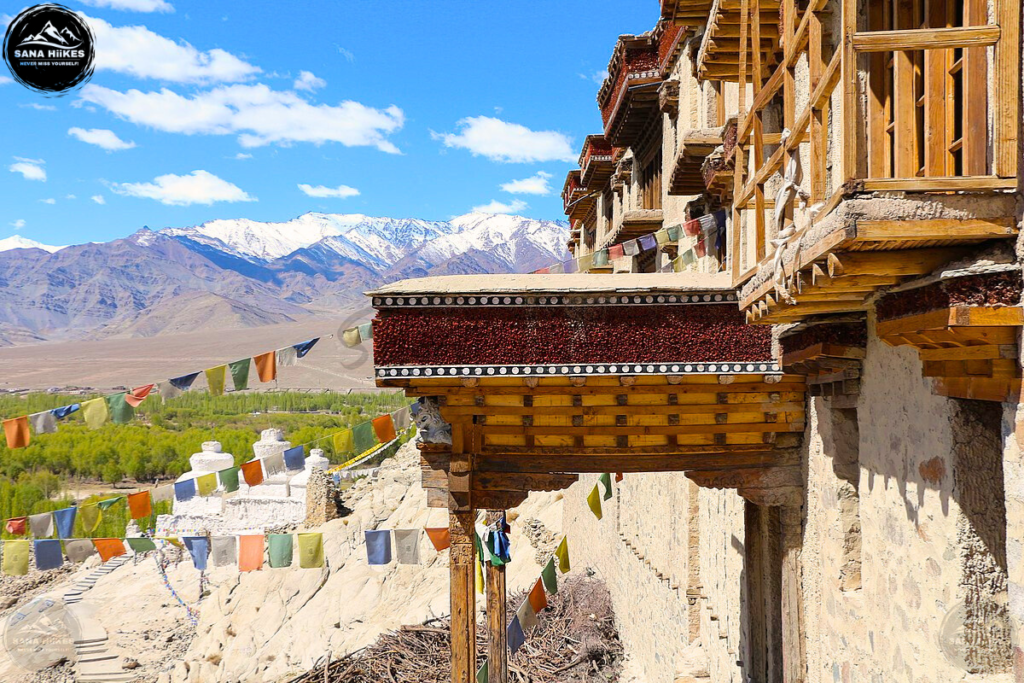
Cultural and Heritage Sites
Ladakh is not just about adventure; it is also a land of rich history and deep-rooted Buddhist traditions. The region is dotted with ancient monasteries, palaces, and spiritual sites that offer insight into Ladakh’s unique culture.
- Thiksey Monastery—The Mini Potala Palace of Ladakh!
One of the most picturesque monasteries in Ladakh, Thiksey Monastery is a 12-story complex that closely resembles the Potala Palace in Tibet. It houses a 15-meter-tall statue of Maitreya Buddha, along with stunning murals and prayer halls. The monastery offers breathtaking sunrise and sunset views over the Indus Valley.
- Hemis Monastery—Home to Ladakh’s Most Famous Festival!
Hemis Monastery is the largest and wealthiest monastery in Ladakh, famous for hosting the Hemis Festival, an annual celebration featuring masked dances, traditional rituals, and Buddhist teachings. The monastery also has a museum displaying rare Buddhist relics, thangkas, and artifacts.
- Leh Palace—The Historic Royal Residence of Ladakh!
Built in the 17th century by King Sengge Namgyal, Leh Palace is a nine-story structure offering panoramic views of Leh town and the surrounding mountains. Though now in ruins, the palace still holds a mystical charm and provides a glimpse into Ladakh’s royal history.
Why Visit Ladakh’s Cultural Sites?
These monasteries and palaces offer spiritual experiences, breathtaking views, and a deep dive into Ladakh’s Buddhist heritage.
Nature and Wildlife in Ladakh
Ladakh is home to some of the most stunning natural landscapes in the world, from pristine high-altitude lakes to rugged wildlife reserves.
- Pangong Lake—The Ever-Changing Blue Waters!
One of the most famous attractions in Ladakh, Pangong Lake (4,350 m) is known for its surreal blue waters that change colors throughout the day. The lake stretches across India and Tibet, offering breathtaking scenery, camping experiences, and stargazing opportunities.
- Tso Moriri Lake—Ladakh’s Hidden Gem!
While Pangong Lake is famous, Tso Moriri is a quieter, lesser-known lake, offering serene surroundings and rich biodiversity. Located at 4,595 meters, this high-altitude lake is home to rare migratory birds, including black-necked cranes, bar-headed geese, and Brahminy ducks.
- Hemis National Park—Home to the Elusive Snow Leopard!
Ladakh is one of the few places in the world where you can spot the elusive Snow Leopard in the wild. Hemis National Park, the largest national park in India, is home to a variety of rare wildlife, including Tibetan wolves, Eurasian brown bears, and blue sheep (bharal). Winter is the best time for Snow Leopard spotting, as they descend to lower altitudes in search of food.
Why Explore Ladakh’s Nature & Wildlife?
From high-altitude lakes to rare animals, Ladakh is a paradise for nature lovers and wildlife enthusiasts!
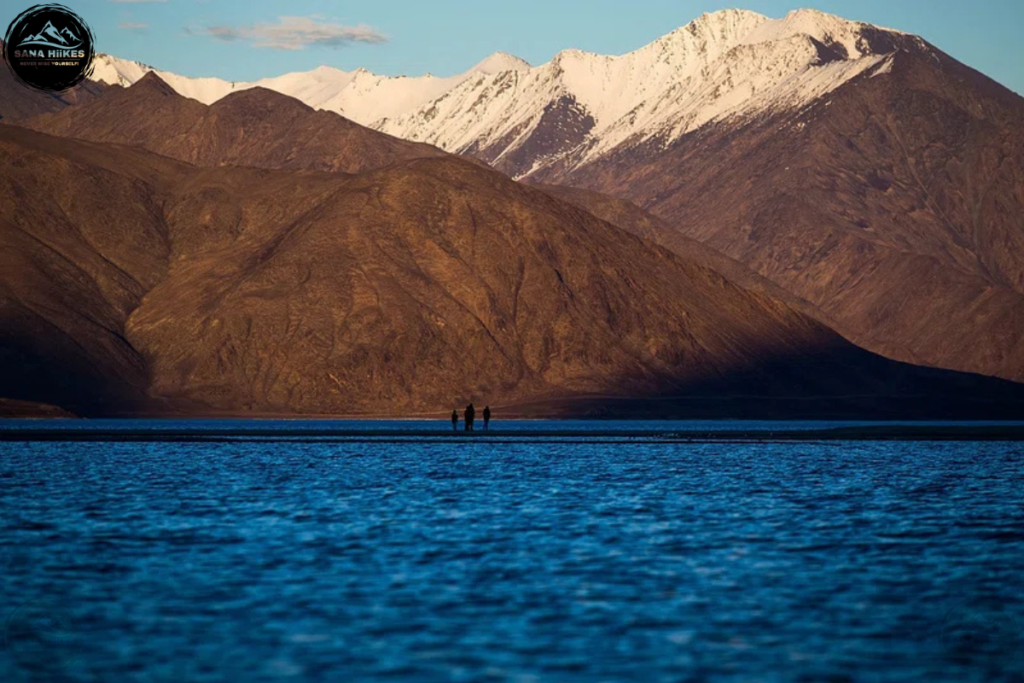
4. Local Cuisine and Where to Eat in Ladakh
Ladakh’s cuisine is a reflection of its harsh climate, Tibetan influences, and locally available ingredients. The food here is designed to provide warmth and energy, making it a must-try experience for visitors. From steaming bowls of thukpa to the unique butter tea, Ladakhi cuisine offers a flavorful and wholesome experience.
Must-Try Local Dishes in Ladakh
- Thukpa – The Ultimate Comfort Food!
Thukpa is a traditional Tibetan noodles soup made with handmade wheat noodles, fresh vegetables, and either chicken, yak, or mutton. Served piping hot, this dish is perfect for Ladakh’s chilly weather and is a favorite among locals and tourists alike. - Momos – The All-Time Favorite Dumplings!
Momos are steamed dumplings filled with vegetables, meat, or cheese, often served with spicy chili sauce. These Tibetan-origin dumplings are one of the most popular street foods in Ladakh and can be found in almost every restaurant and roadside stall. - Skyu – A Traditional Ladakhi Pasta Dish!
Skyu is a hearty, hand-rolled wheat pasta dish cooked with root vegetables like carrots, turnips, and potatoes. It is a staple dish among Ladakhis, providing warmth and energy during the cold months. Skyu is often enjoyed with a side of butter tea or curd. - Butter Tea—Ladakh’s Signature Drink!
Also known as Gur Gur Chai, Butter Tea is a salty, creamy tea made with yak butter, tea leaves, and salt. It may taste unusual to first-timers, but it is an essential part of Ladakhi culture, helping locals stay warm in freezing temperatures. It is also a great energy booster at high altitudes.
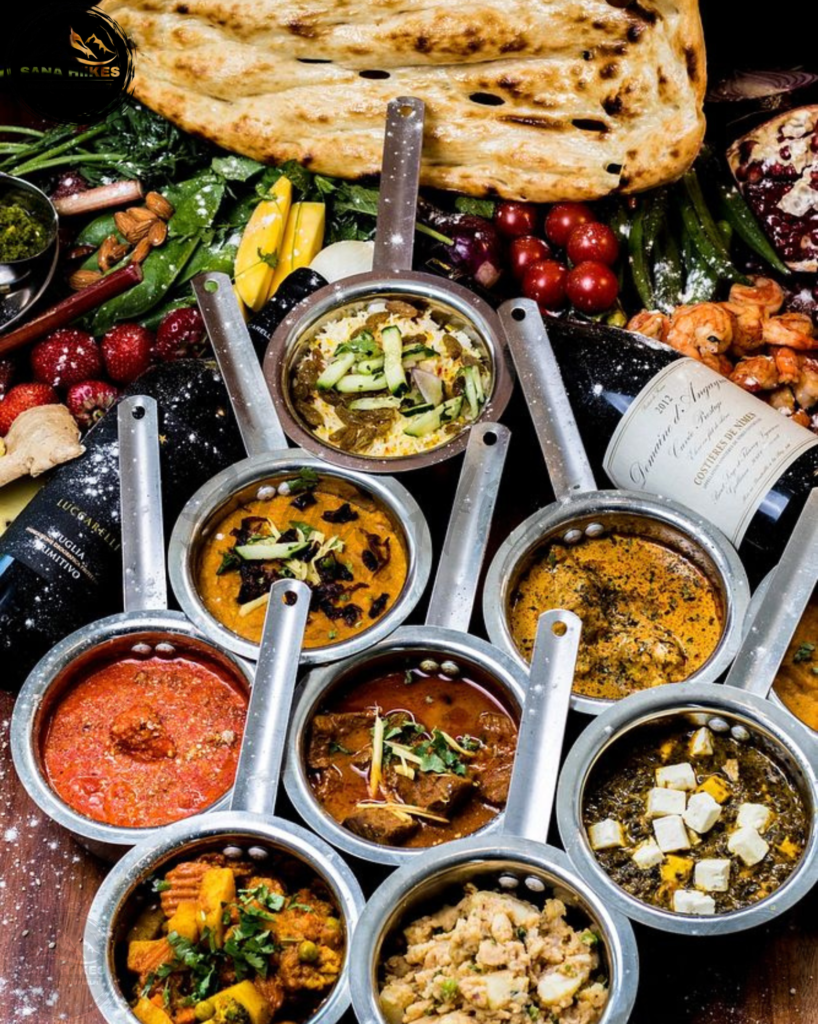
Best Places to Eat in Leh
Ladakh, especially Leh, has a vibrant food scene, offering both local Ladakhi dishes and international cuisines. Here are some of the best restaurants in Leh to experience authentic Ladakhi flavors and more:
- Gesmo Restaurant – The Go-To Spot for Tibetan and Indian Food!
If you’re craving a mix of authentic Tibetan and Indian flavors, Gesmo Restaurant is a must-visit. Their thukpa, momos, and yak cheese sandwiches are especially popular among travelers. - The Tibetan Kitchen – Famous for Ladakhi and Tibetan Delicacies!
One of the most highly recommended restaurants in Leh, The Tibetan Kitchen serves delicious momos, butter tea, and traditional Tibetan platters. The cozy ambiance and flavorful food make it a perfect place for an authentic Ladakhi meal. - Bon Appetit – A Blend of Ladakhi and Continental Cuisine!
Looking for a mix of local and Western flavors? Bon Appetit is a great choice. Apart from traditional Ladakhi dishes like Skyu, they also serve delicious wood-fired pizzas and pastas. The restaurant offers beautiful outdoor seating, making it a perfect spot to relax and enjoy a meal with scenic views.
5. Travel Tips & Essentials
A trip to Ladakh requires careful planning due to its high altitude, remote location, and extreme weather conditions. To ensure a safe and enjoyable experience, here are some essential travel tips to keep in mind before embarking on your Ladakh adventure.
- Acclimatization – Adjust to the High Altitude First!
Ladakh is located at an altitude of over 3,000 meters (9,800 feet), which makes acclimatization crucial to avoid acute mountain sickness (AMS). The lack of oxygen can cause headaches, nausea, and dizziness.
- Spend at least 1-2 days in Leh before traveling to higher altitudes like Nubra Valley, Pangong Lake, or Tso Moriri.
- Stay hydrated and avoid alcohol or heavy exertion in the first 48 hours.
- Carry medicines like Diamox if you’re prone to altitude sickness.
- Permit Requirements – Don’t Forget These!
Ladakh is close to international borders, so permits are mandatory for visiting certain areas.
Inner Line Permit (ILP) is required for:
- Nubra Valley
- Pangong Lake
- Tso Moriri
- Hanle & Chushul region
How to Get a Permit?
- Apply online at the Ladakh administration website or get it from the Leh DC Office.
- Carry multiple copies of the permit, as you’ll need them at various checkpoints.
- Weather Precautions – Pack Right for Every Season!
Ladakh’s climate is extreme, and weather conditions change rapidly. Packing appropriately will make your journey comfortable.
For Summer (May–September):
- Light woolens, full-sleeved shirts, and comfortable trekking pants.
- Sunglasses, sunscreen (SPF 50+), and lip balm to prevent sunburn.
For Winter (October–April):
- Heavy woolens, thermals, down jackets, gloves, and warm socks.
- Waterproof snow boots and insulated layers for extreme cold.
- Cash Availability – Carry Enough; ATMs Are Limited!
ATMs are very limited in Ladakh, especially in remote areas like Nubra Valley, Pangong, and Tso Moriri.
- Carry enough cash from Leh, as ATMs may not always function due to network issues.
- Digital payments are not widely accepted, so cash is the safest option.
- Network Connectivity – Limited Signals, Plan Accordingly!
Mobile networks are unreliable in Ladakh, and only a few operators work here.
- BSNL & Jio have the best coverage in Leh and some remote areas.
- Airtel & Vi (Vodafone-Idea) have limited or no connectivity.
- Get a postpaid SIM card, as prepaid SIMs from other states do not work in Ladakh.
Pro Tip: Carry a power bank, as electricity is limited in some areas.
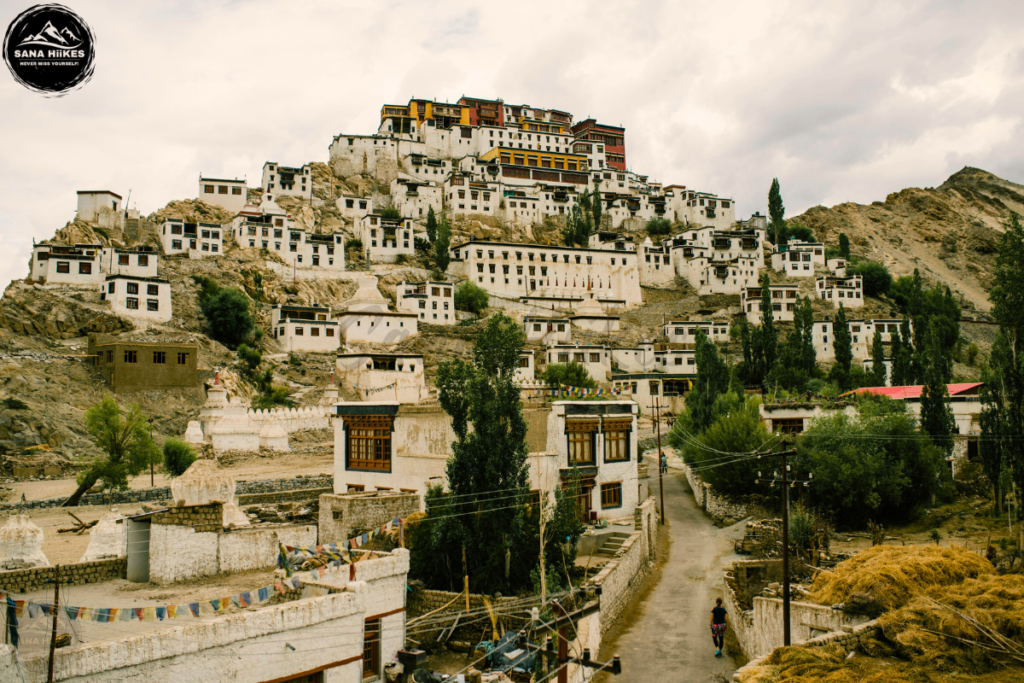
Final Thoughts
Ladakh is not just a destination; it’s an experience of a lifetime. Nestled in the Himalayas, this cold desert offers breathtaking landscapes, rich Buddhist culture, thrilling adventures, and an unmatched sense of tranquility. From the turquoise waters of Pangong Lake to the rugged terrains of Harding La, every moment in Ladakh is a postcard-perfect memory.
For adventure seekers, Ladakh is paradise—whether it’s a bike trip through the highest motorable roads, trekking in the Markha Valley, or river rafting in the Zanskar River, the adrenaline rush is real! If you are a nature lover, the stark yet mesmerizing landscapes, stunning lakes, and rare wildlife like the elusive Snow Leopard will leave you awestruck. And for those interested in culture, the centuries-old monasteries, traditional Ladakhi lifestyle, and vibrant festivals offer a deep dive into the spiritual side of the region.
Ladakh is remote, raw, and challenging, but that’s what makes it so special. So, pack wisely, prepare for the high altitude, and embark on an unforgettable journey to the Land of High Passes.
Have you been to Ladakh? Share your most memorable experience in the comments!
FAQs About Ladakh – Plan Your Trip Like a Pro!
Here are some frequently asked questions about traveling to Ladakh:
Q1. What is the best time to visit Ladakh?
Q2. Do I need a permit for Ladakh?
Q3. Is Ladakh safe for solo travelers?
Q4. How to prevent altitude sickness in Ladakh?
Q5. How to reach Ladakh?
Flight: Leh’s Kushok Bakula Rimpochee Airport is well-connected to Delhi, Mumbai, and Chandigarh.
Road: Srinagar-Leh Highway and Manali-Leh Highway offer stunning road trip experiences.
Q6. What are the best adventure activities in Ladakh?
Q7. What are the top places to visit in Ladakh?
Q8. What should I pack for a Ladakh trip?
High SPF sunscreen & lip balm
Comfortable trekking shoes for exploration.
Power bank & extra batteries

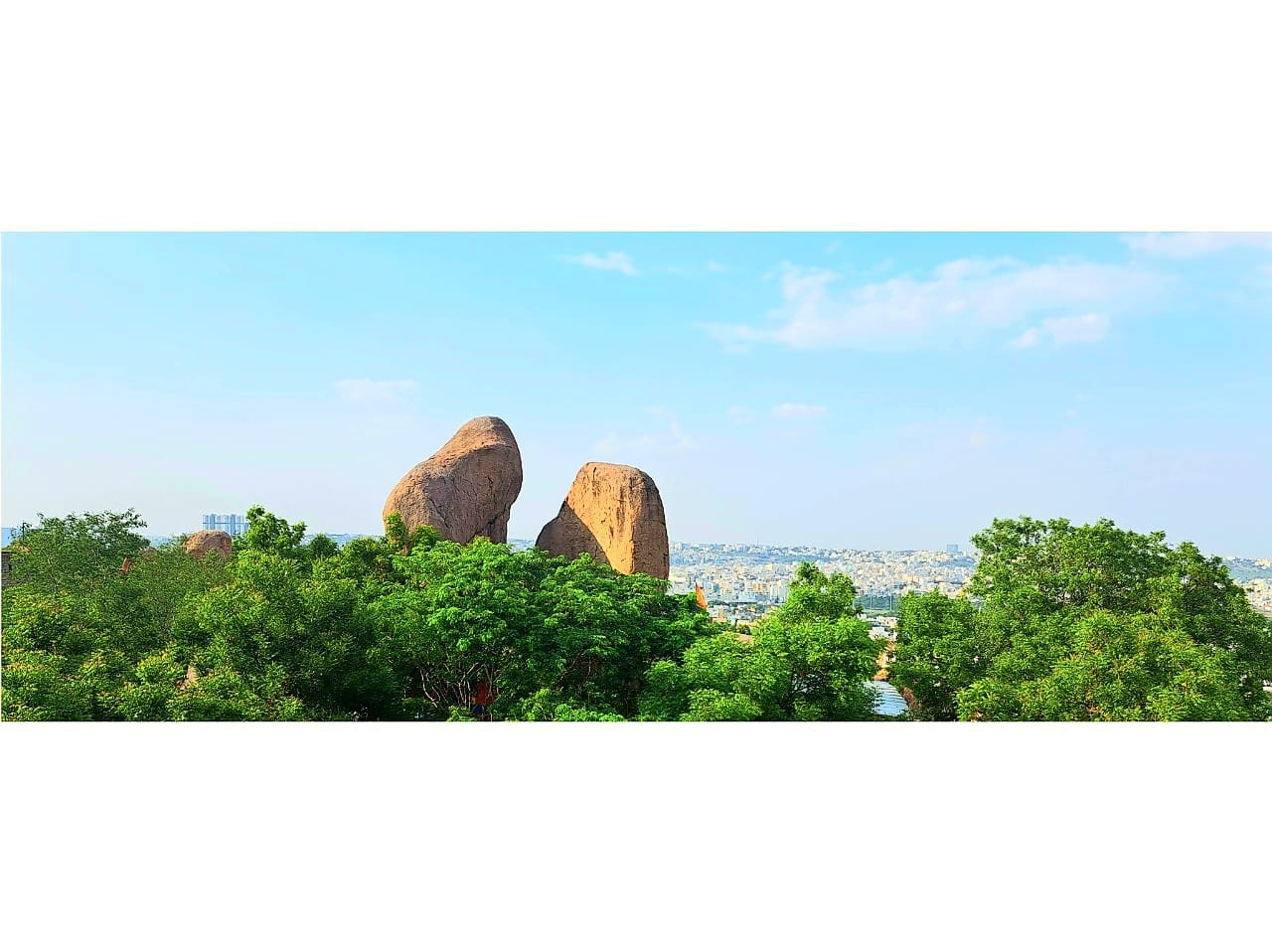
Leave a Reply